Bauhaus Design Movement: Philosophy, Principles & Ideas
Throughout the 20th century, various avant-garde movements influenced the development of modern art. While many of them predominantly favored paintings, the Bauhaus movement encompassed a wide range of media, materials, and disciplines. To this day, Bauhaus is regarded as one of the most significant design styles of all time. Combining aesthetics with function, it helps to produce forms that bring beauty to any creative project
Due to its adaptable style, Bauhaus may be used for a range of design purposes, from social media posts and newsletters to illustration and branding design. If you’re keen to experiment with your visual communications and seize people’s attention, give Bauhaus aesthetics a try! Read the article to learn more about this iconic movement and find a way for your creative projects to stand out.
What is the Bauhaus movement?
One institution is responsible for the development of the Bauhaus design movement: the Staatliches Bauhaus in Germany. The German architect Walter Gropius founded the school in 1919, six months after World War I, intending to establish a radical new style of design and architecture to help reconstruct post-war society. Even though the Bauhaus school only existed for 14 years, it started a powerful movement that would alter the course of art history, significantly influencing the graphic design, architecture, and interior and furniture design.
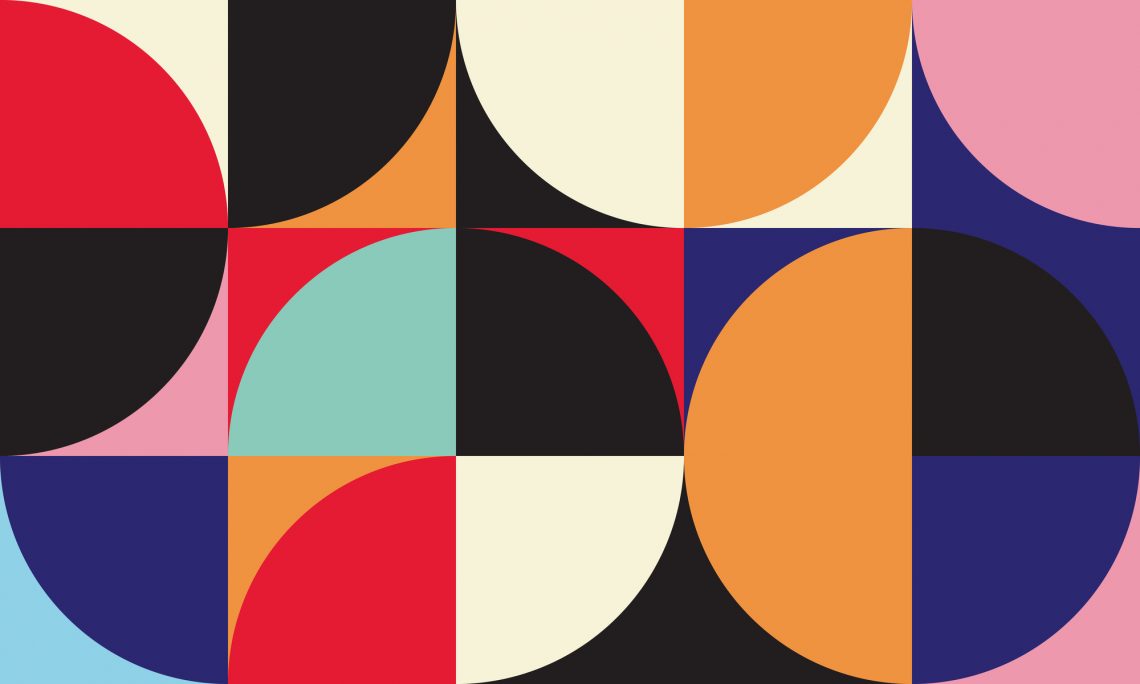
As an architect, in the school’s name, Gropius used the German word “bau,” which means “build.” Yet, he wasn’t interested only in architecture. Gropius aimed to unify all arts and crafts under one roof and establish a school that would take an all-encompassing approach to art. By combining many art forms, it had to produce a Gesamtkunstwerk, meaning a “comprehensive artwork.” This way, many art forms could communicate and influence one another rather than exist separately in different schools for painting, sculpture, and architecture. Such an approach is one of the reasons the Bauhaus movement profoundly impacted a wide range of fields. Numerous well-known painters and designers flourished at the institution, creating a new contemporary art movement characterized by its unique approach to different design forms.
In 1933, intimidation from the Nazi regime, pressured the school to close, forcing its directors and personnel to leave Germany. Emigrating to other parts of the world, the faculty helped to spread the Bauhaus design philosophy, thus transforming it into a worldwide movement. Today, Bauhaus is famous for its distinct style and ongoing influence on modern and contemporary design.
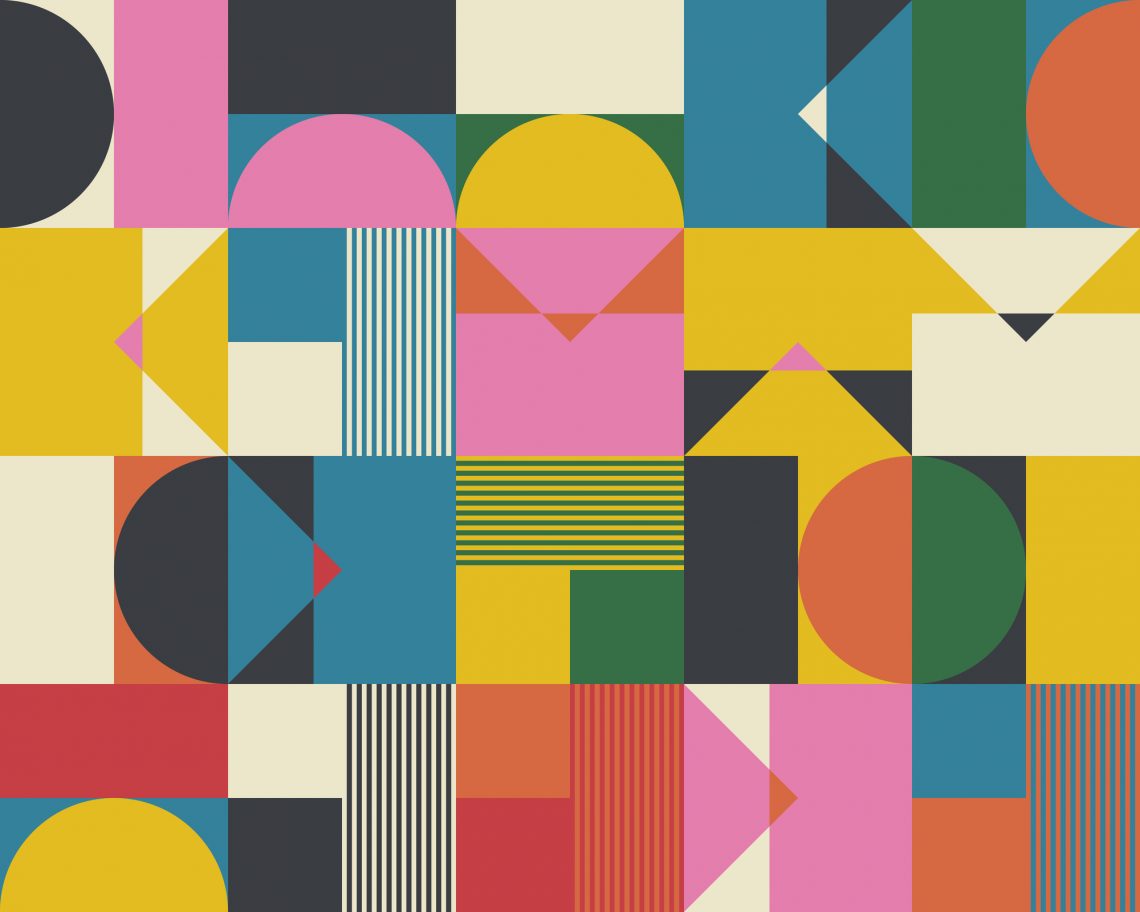
Bauhaus Philosophy and Design Principles
1. Functionality.
The Bauhaus movement’s main motto is “form follows function.” It means producing modern and sophisticated designs while focusing on the function of all elements. In Bauhaus designs, while an object’s shape should assist its function, visual components should also remain aesthetically pleasing. By eliminating the use of extra ornamental elements, Bauhaus artists sought to capture the objects’ nature. In other words, Bauhaus is founded on a simple, no-gimmicks and no-frills philosophy that prioritizes functionality over aesthetics for aesthetics’ sake.
2. Minimalism.
You’ve probably heard the saying “less is more.” It comes from Mies van der Rohe, an influential architect and the last director of the Bauhaus school. A key feature in many Bauhaus designs was simplicity. The goal of Bauhaus artists was to make their work understandable, whether they were working with typography, poster design, illustration, or more. The road to achieving accessibility, being practical, and maintaining aesthetic value was simplicity. White space, straightforward yet dramatic forms, and primary colors were used to build beauty in simplicity.
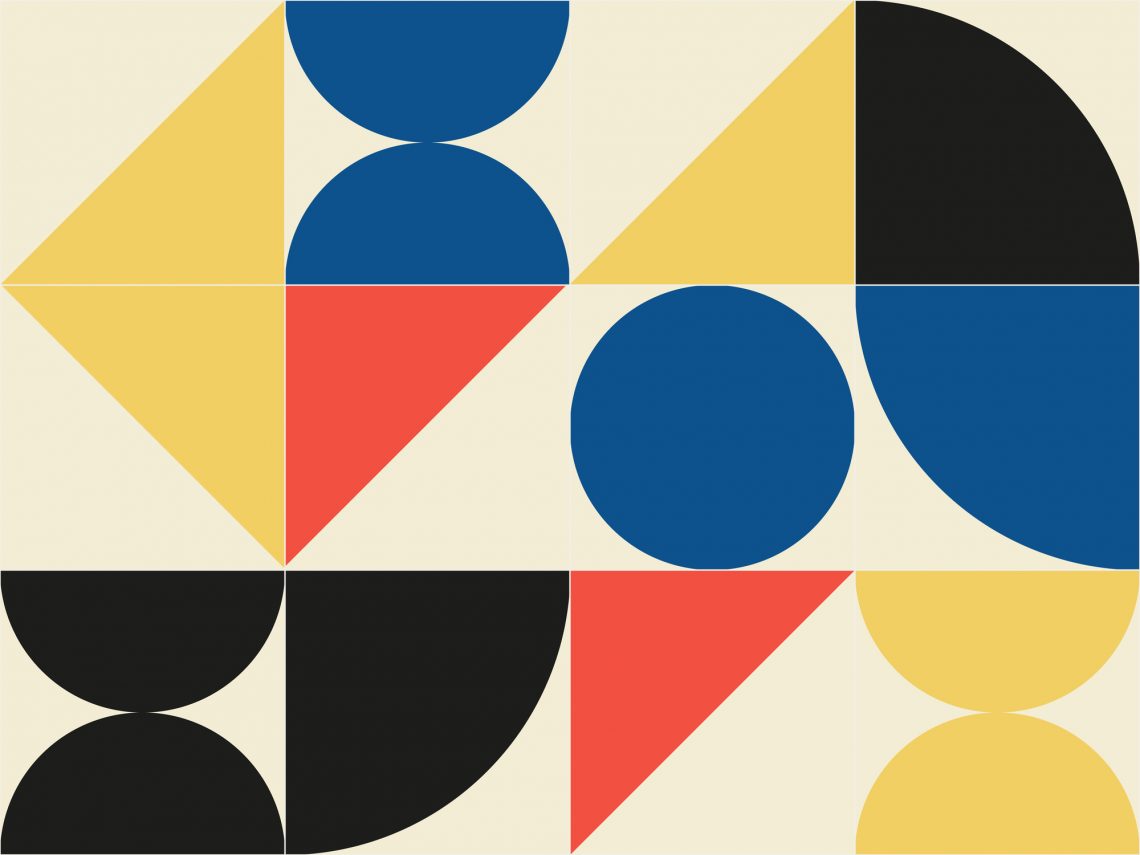
3. Innovation.
Ideas were just as important to Bauhaus as the actual design work. It was a movement that demanded the development of new methods of producing designs. The goal was to find fresh approaches and alternative modes of thought. Bauhaus artists believed that innovative ways of learning and creating should influence how we perceive and understand the world. Innovation is still a crucial aspect that holds true in modern design, going hand in hand with creativity. If we want to develop original concepts and better solutions, design needs to be in a constant state of innovation.
4. Artist and Artisan Unified.
Gropius’s grand idea was to dissolve the barriers between craftsmen and artists. He intended to establish what he called “a guild of craftspeople” by bringing all creative forms under a single roof. The school placed equal significance and importance on typography, textile, weaving, metal, and cabinetmaking crafts, as well as fine art and theory.

Key elements of the Bauhaus design
1. Experimental layout.
In the spirit of creativity and artistic exploration and creativity, Bauhaus artists developed a new approach to layout. They experimented with alternative placement of objects, angles, and white space. The new layout method sparked a spirit of creativity and created a renewed sense of freedom that would influence graphic design for future decades.
2. Geometric shapes.
The Bauhaus design philosophy relied heavily on simple geometric forms, which supported its emphasis on functionality. Bauhaus used streamlined geometric designs with a few extra details. As a decoration, it sometimes incorporated abstract forms and shapes. As technology and automation were essential elements of the Bauhaus movement, geometric shapes visually represented the technical thinking that characterized that time.
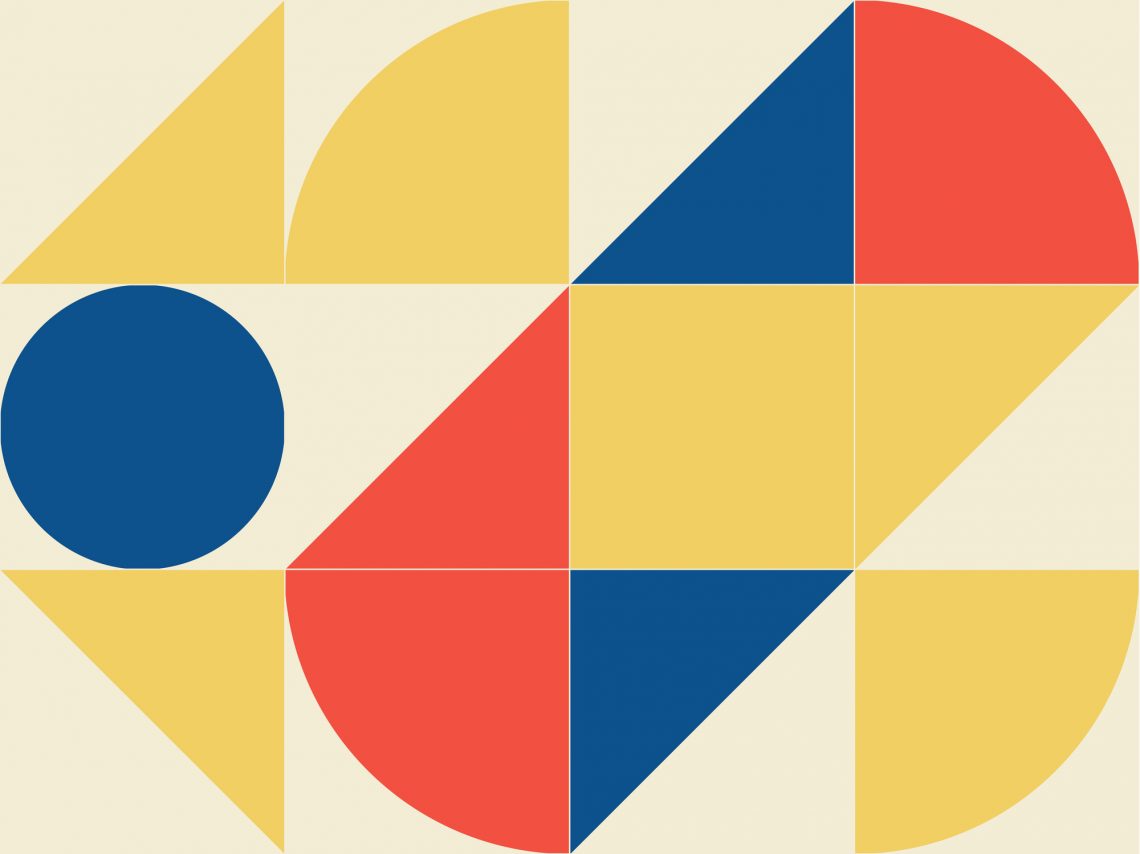
3. Primary color schemes.
Bauhaus color schemes, which emphasize minimalism and simplicity, frequently stick to basic colors like white, gray, and beige, as well as primary colors like red, yellow, or blue. This comes back to the core of simplicity while still generating aesthetic value through contrasting different colors. Although primary colors weren’t the only ones used in the Bauhaus movement, they still predominated in most of its designs.
4. Emphasis on technology.
Because the Bauhaus movement was all about combining art and industry, its artists focused on searching for new tools, methods, and perspectives to keep their design work constantly evolving. They frequently employed a wide range of contemporary and industrial materials, including glass, concrete, wood, and steel. The artists of the Bauhaus welcomed the new opportunities by creating mass-production prototypes of their works.
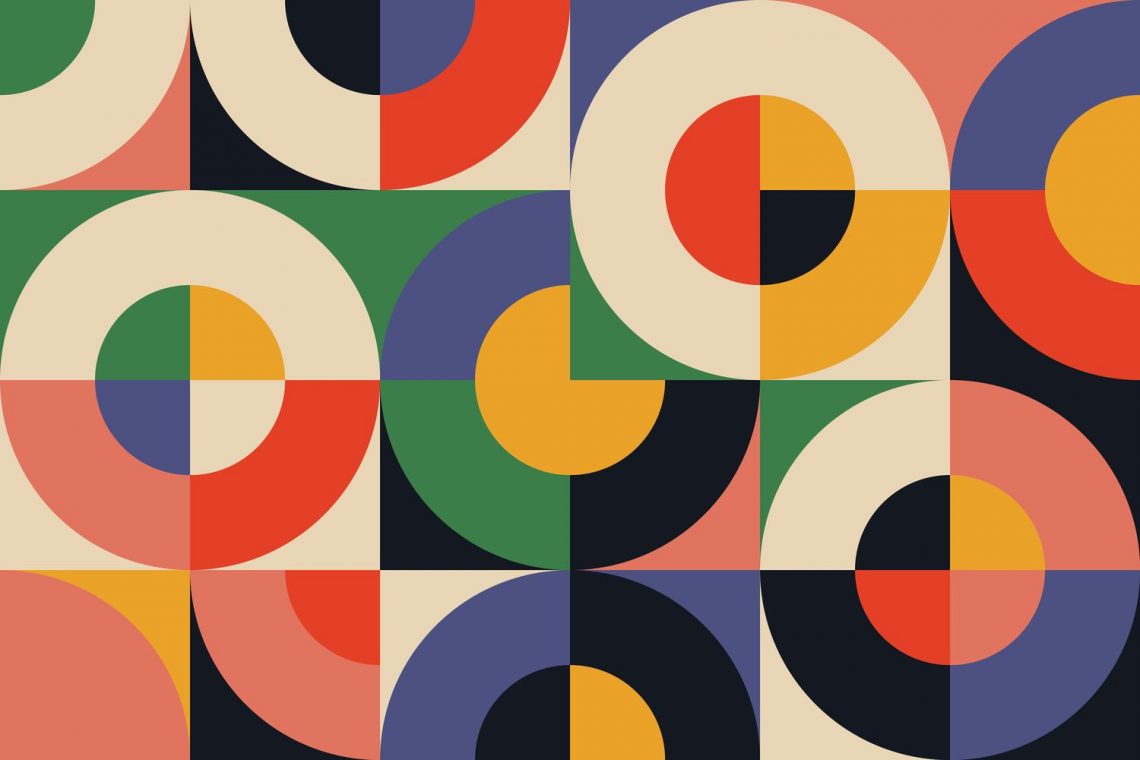
To wrap up
It would be an understatement to say that the Bauhaus movement had influenced modern graphic design. Even though the Bauhaus school itself existed for only 14 years, it had a profound impact on generations of creatives all around the world, helping us to reconsider typography, layout, and the use of color. The timeless principles of Bauhaus philosophy still hold up, inspiring graphic designers to experiment with materials and forms. Bauhaus concepts are timeless for a reason, so don’t hesitate to implement them in your designs! It can help you create eye-catching visuals and attract more attention to your creative projects.
Other articles you might find interesting
Retro Rewind: Design Trends of the 60s, 70s, and 80s Explained
Trippy Psychedelic Art: A Brief History, Design Ideas & Tip
The Power of Neon: Definition, Design Tips, and Color Codes






